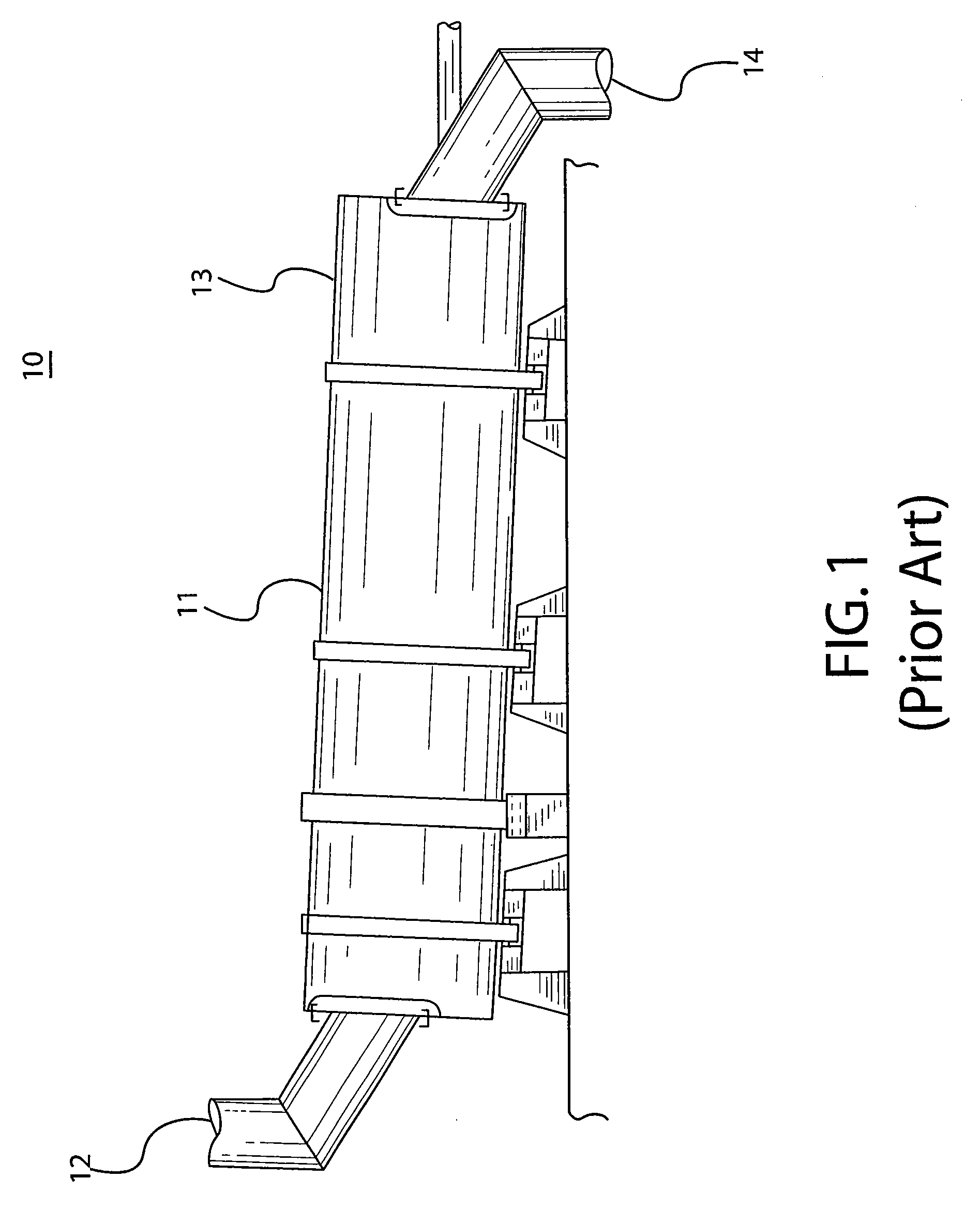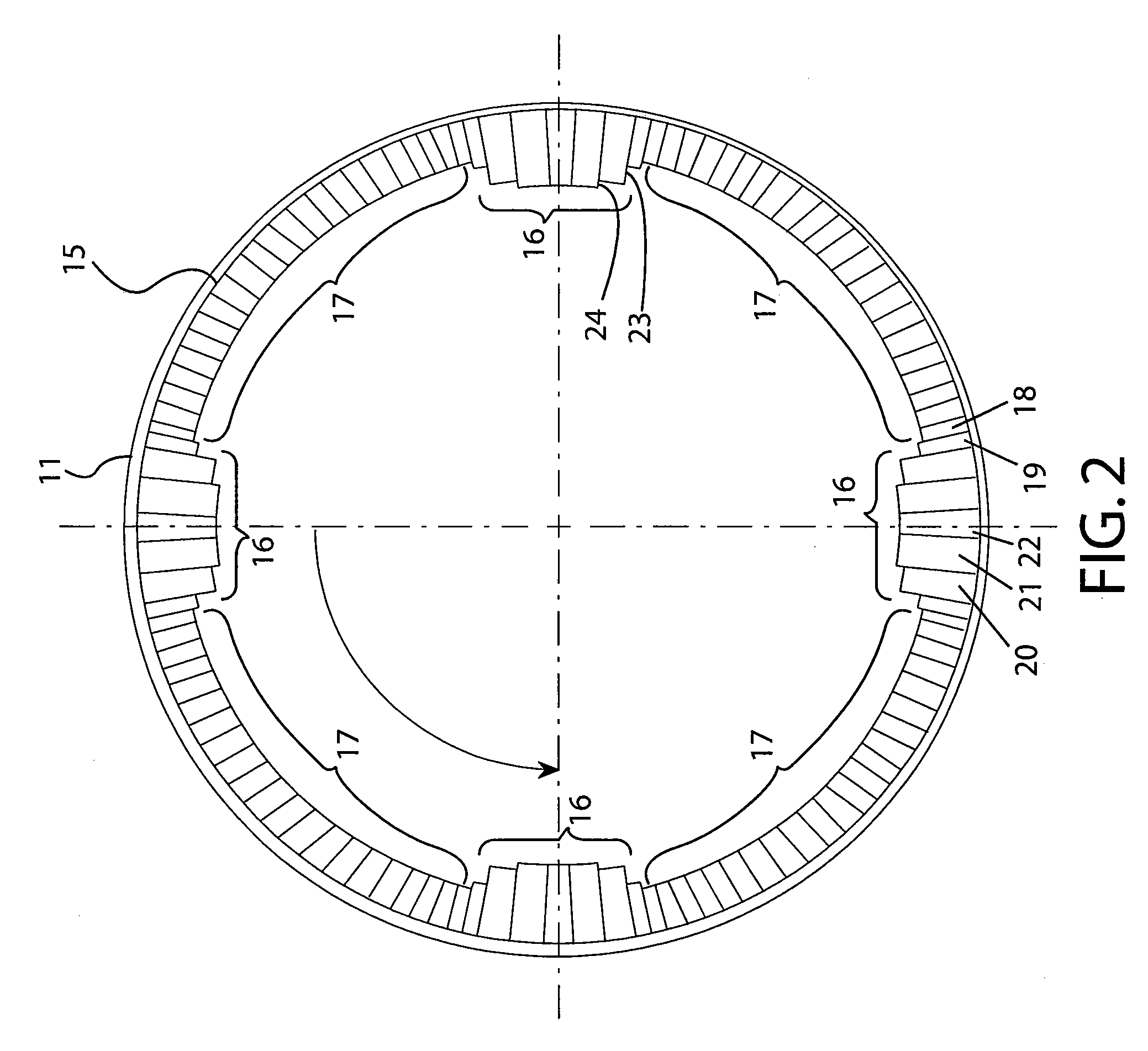Rotary kiln lining and method
a rotary kiln and lining technology, applied in the field of rotary kilns, can solve the problems of monolithic castings that are costly and difficult to repair, can not be implemented in the hottest portions of the kiln, and the lining degrades, so as to achieve flexible and cost-effectiveness, the effect of easy maintenan
- Summary
- Abstract
- Description
- Claims
- Application Information
AI Technical Summary
Benefits of technology
Problems solved by technology
Method used
Image
Examples
Embodiment Construction
[0019]Rotary kilns process a wide variety of materials used in a number of industries. FIG. 1 is a perspective view of a rotary kiln 10 according to the prior art. The rotary kiln 10 is characterized by a long cylindrical shell 11 which, when viewed in cross-section (not shown), has a refractory lining which extends longitudinally for a portion or all of the length of the shell 11. Referring back to FIG. 1, shell 11 sits at an incline of 3°-5°, or at an elevation sufficient to cause material charged at an inlet 12 to move towards a discharge 14. Rotary kilns may be constructed in a variety of sizes, with typical diameters of 4-15 feet and lengths of 75-500 feet.
[0020]Generally, rotary kilns process materials by heating them to extreme temperatures, as would a furnace. By way of example, the rotary kiln 10 is described below with respect to the pyro-processing of lime. At extreme temperatures, the calcination of limestone to produce Hi-Cal Limestone / quicklime occurs according to the ...
PUM
| Property | Measurement | Unit |
|---|---|---|
| lengths | aaaaa | aaaaa |
| diameters | aaaaa | aaaaa |
| size | aaaaa | aaaaa |
Abstract
Description
Claims
Application Information
 Login to View More
Login to View More - R&D
- Intellectual Property
- Life Sciences
- Materials
- Tech Scout
- Unparalleled Data Quality
- Higher Quality Content
- 60% Fewer Hallucinations
Browse by: Latest US Patents, China's latest patents, Technical Efficacy Thesaurus, Application Domain, Technology Topic, Popular Technical Reports.
© 2025 PatSnap. All rights reserved.Legal|Privacy policy|Modern Slavery Act Transparency Statement|Sitemap|About US| Contact US: help@patsnap.com



